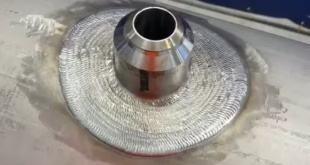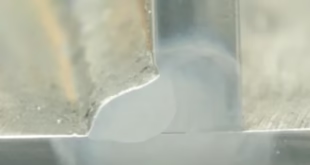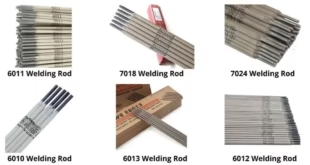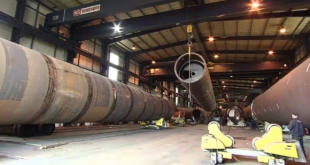MIG vs Flux Core Welding
Welding is an essential process used to join metals together in various industries such as construction, manufacturing, and automotive. There are different types of welding techniques available, each with its own advantages and limitations. Two popular types of welding techniques are Metal Inert Gas (MIG) welding and Flux Core welding. Both techniques have their own unique features and applications. In this introduction, we will explore the differences between MIG and Flux Core welding, and their respective advantages and disadvantages to help you choose the best welding technique for your specific needs.
MIG Welding
MIG welding stands for Metal Inert Gas welding, also known as Gas Metal Arc Welding (GMAW). It is a welding process that uses a spool of wire which is fed through a welding gun and is connected to a shielding gas supply. The wire is heated and melts into the base metal to create a strong weld.
Flux Core Welding
Flux core welding, also known as Flux Cored Arc Welding (FCAW), is a welding process that uses a hollow wire electrode with a flux inside. The flux protects the weld from atmospheric contamination and provides a shield from the heat of the arc. The flux also melts and creates a layer of slag that covers the weld, protecting it from oxidation.
Purpose of Comparison
The purpose of this comparison is to help you understand the differences between MIG welding and Flux core welding, their advantages and disadvantages, and when to use each process. By understanding the differences between these two welding methods, you can make an informed decision about which one is best suited for your welding needs. The comparison will cover factors such as weld quality, cost, versatility, ease of use, and outdoor use, among others.
MIG Welding
Explanation of MIG Welding Process
MIG welding uses a spool of wire that is fed through a welding gun, and the wire is connected to a shielding gas supply. The wire is heated and melts into the base metal to create a strong weld. The shielding gas protects the weld from atmospheric contamination and provides a shield from the heat of the arc.
Pros of MIG Welding
1. Clean and efficient welds: MIG welding produces clean and efficient welds due to the use of shielding gas, resulting in a weld that is free of slag and spatter.
2. High-quality welds: MIG welding produces high-quality welds due to the precise control of the heat input and the ability to control the wire feed speed.
3. Versatility: MIG welding can be used on a wide range of materials, including stainless steel, aluminum, and mild steel.
Cons of MIG Welding
1. Expensive equipment: MIG welding equipment can be expensive, which can make it less accessible for some users.
2. Limited in outdoor settings: MIG welding requires a clean environment to operate effectively, which can limit its use in outdoor settings.
3. Requires some skill to operate: MIG welding requires some skill and practice to operate effectively, which can be challenging for beginners.
MIG welding is a popular welding process due to its ability to produce clean and efficient welds, its high-quality welds, and its versatility. However, it can be more expensive than other welding methods, is limited in outdoor settings, and requires some skill to operate effectively.
Flux Core Welding
Flux core welding uses a hollow wire electrode with a flux inside. The flux protects the weld from atmospheric contamination and provides a shield from the heat of the arc. The flux also melts and creates a layer of slag that covers the weld, protecting it from oxidation.
Pros of Flux Core Welding
1. Cost-effective:
Flux core welding can be more cost-effective than other welding methods, as it does not require a separate shielding gas supply.
2. Good for outdoor settings:
Flux core welding can be used effectively in outdoor settings, as it does not require a clean environment to operate.
3. High-deposition rates:
Flux core welding can achieve high-deposition rates, which means that it can weld faster than some other welding methods.
Cons of Flux Core Welding
1. Lower-quality welds:
Flux core welding can produce lower-quality welds than other welding methods, as the slag created during the process can make the weld appear rough and uneven.
2. Requires more cleanup:
Flux core welding requires more cleanup than other welding methods, as the slag created during the process needs to be removed after the weld is complete.
3. Limited in terms of versatility:
Flux core welding is limited in terms of the materials it can be used on, as it is typically used on thicker materials, such as steel.
Flux core welding can be a cost-effective and versatile welding method, particularly for outdoor settings or for welding thicker materials. However, it can produce lower-quality welds and requires more cleanup than other welding methods, and is limited in terms of versatility.
Comparison
1-Weld Quality
MIG Welding
MIG welding produces high-quality, clean, and efficient welds, due to the precise control of the heat input and the ability to control the wire feed speed. MIG welding also produces a smooth, even weld appearance, making it ideal for projects where appearance is important.
Flux Core Welding
Flux core welding can produce welds with lower quality compared to MIG welding. The slag produced during the welding process can make the weld appear rough and uneven.
2-Cost
MIG Welding
MIG welding equipment and supplies can be expensive, including the cost of a shielding gas supply and a wire feeder. The cost of MIG welding can also vary depending on the type of material being welded.
Flux Core Welding
Flux core welding can be more cost-effective than MIG welding, as it does not require a separate shielding gas supply. However, the cost of flux core wire can be higher than MIG wire.
3-Versatility
MIG Welding
MIG welding is highly versatile and can be used on a wide range of materials, including stainless steel, aluminum, and mild steel. MIG welding can also be used for different types of welding, such as spot welding, tack welding, and full-penetration welding.
Flux Core Welding
Flux core welding is limited in terms of the materials it can be used on, as it is typically used on thicker materials, such as steel. Flux core welding is also limited in terms of the types of welding it can be used for.
4-Ease of Use
MIG Welding
MIG welding requires some skill and practice to operate effectively, but is generally considered easier to learn and use than other welding methods. MIG welding also allows for continuous welding, making it faster than other welding methods.
Flux Core Welding
Flux core welding can be more difficult to learn and use compared to MIG welding, as it requires precise control of the wire feed and the heat input. Flux core welding also produces more spatter and requires more cleanup.
5-Outdoor Use
MIG Welding
MIG welding requires a clean environment to operate effectively, which can limit its use in outdoor settings.
Flux Core Welding
Flux core welding can be used effectively in outdoor settings, as it does not require a clean environment to operate.
MIG welding produces higher quality welds, but can be more expensive and requires a clean environment to operate effectively. Flux core welding can be more cost-effective, and is suitable for outdoor use, but can produce lower quality welds and requires more cleanup. MIG welding is more versatile and easier to use, while flux core welding is limited in terms of materials and types of welding. The choice between MIG and flux core welding will depend on the specific project requirements and the user’s budget and skill level.
FAQs
Is flux core welding as strong as MIG welding?
Flux core welding can be as strong as MIG welding if done properly, but it depends on the specific materials being welded, the type of flux core wire used, and the welding technique employed. MIG welding typically produces cleaner, more precise welds, but flux core welding can be more forgiving when working with thicker materials and in outdoor or windy conditions.
What are the disadvantages of flux core welding?
The disadvantages of flux core welding include the production of slag that needs to be removed after welding, higher levels of spatter compared to MIG welding, and the need for proper ventilation due to the release of fumes and smoke during the welding process.
Is MIG welding the same as flux core?
MIG welding and flux core welding are similar in that they both use a wire-fed welding process to join metals together, but they differ in the type of wire used. MIG welding uses a solid wire while flux core welding uses a tubular wire filled with flux. MIG welding produces cleaner welds, while flux core welding is more forgiving in outdoor or windy conditions.
What is an advantage of flux core welding?
One advantage of flux core welding is that it can be used in outdoor or windy conditions since the flux in the wire acts as a shield against air currents. It can also be used to weld thicker materials and produces welds that are generally stronger than those produced by stick welding.
What are the 3 disadvantages of MIG welding?
The three disadvantages of MIG welding are the higher cost of equipment compared to stick welding, the need for a clean work surface to avoid contamination of the weld, and the need for a shielding gas to protect the weld from atmospheric gases that can cause porosity in the weld.
Can flux core welds be strong?
Yes, flux core welds can be strong if the proper welding techniques and materials are used. Welding parameters such as amperage, voltage, and wire speed must be set correctly, and the appropriate flux core wire must be used for the specific application.
What is a disadvantage of MIG welding?
One disadvantage of MIG welding is that it requires a shielding gas to protect the weld from atmospheric gases that can cause porosity in the weld. This means that the welding equipment must be set up with a gas supply and regulator, adding to the cost and complexity of the process.
What metals can be welded with flux core?
Flux core welding can be used to weld a variety of metals, including carbon steel, stainless steel, and some high-strength low-alloy steels. The specific type of flux core wire used will depend on the material being welded and the welding conditions.
Does flux core burn hotter than MIG?
Flux core welding typically requires higher amperage and voltage settings than MIG welding, which can result in a hotter arc and a greater deposition rate. However, the specific heat produced during welding will depend on the specific welding parameters used and the materials being welded.
Which welding is strongest?
The strength of a weld depends on many factors, including the type of material being welded, the welding technique used, and the specific parameters used during welding. Generally, MIG welding produces cleaner, more precise welds, while flux core welding can produce stronger welds in thicker materials and in outdoor or windy conditions.
Can you weld iron with flux core?
Flux core welding can be used to weld iron, but it is typically not the best choice. Iron has a high carbon content, which can lead to cracking during welding. Stick welding is a more common method for welding iron due to its ability to handle higher carbon content.
Conclusion
Both MIG and Flux Core welding techniques have their own unique advantages and disadvantages. MIG welding is generally faster and produces cleaner welds, but it requires a shielding gas and may not be suitable for outdoor or windy conditions. Flux Core welding, on the other hand, can be done outdoors and doesn’t require a shielding gas, but it may produce more spatter and slag, and the welds may require more post-weld cleaning. When deciding between MIG and Flux Core welding, it’s important to consider the specific application and environment in which the welding will be done. Factors such as the material being welded, the thickness of the material, the desired weld quality, and the availability of power sources and equipment will all play a role in determining which welding technique is the best choice. Ultimately, the best choice for MIG vs Flux Core welding will depend on the individual needs and preferences of the welder or the project requirements. Both techniques have their place in the welding industry, and each can be used effectively when applied correctly.
 Welding of Welders All about Welding and Welders
Welding of Welders All about Welding and Welders



